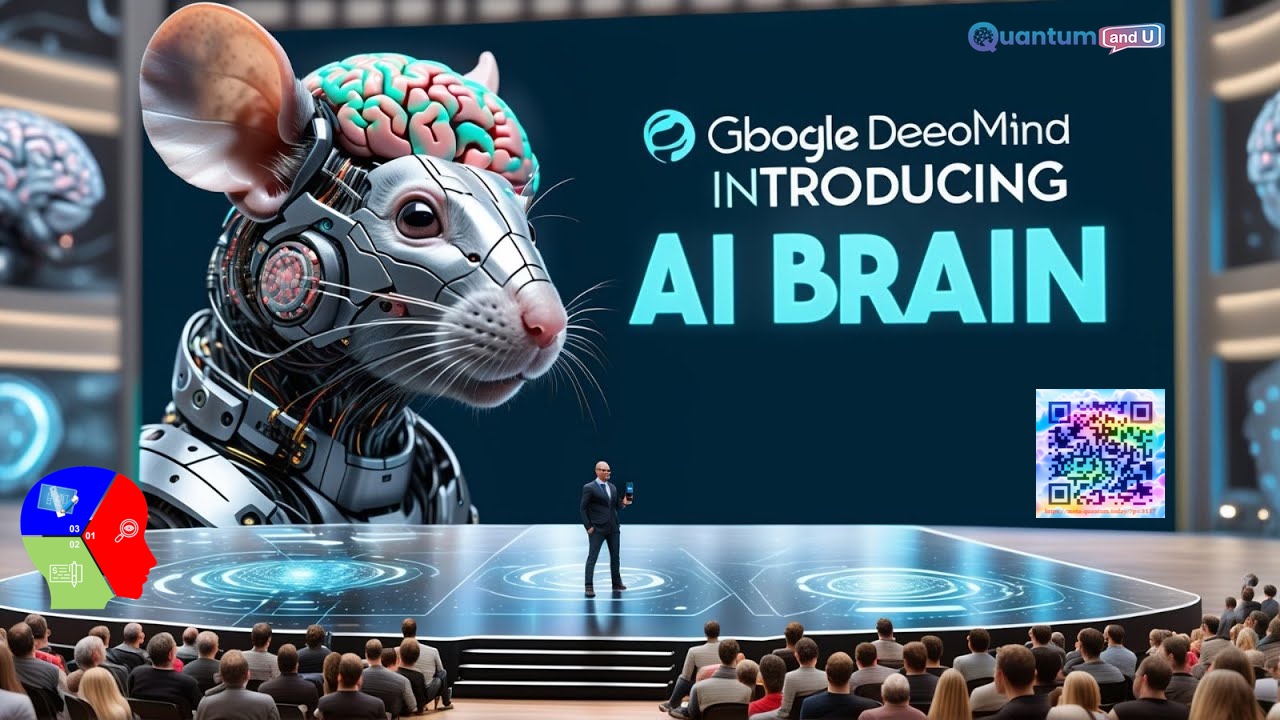
Introduction:
This document explores a groundbreaking achievement at the intersection of neuroscience and artificial intelligence. Researchers from Harvard and DeepMind have created an artificial brain for a virtual rat, which controls its movements in a realistic physics simulation. This development has significant implications for understanding real brains and advancing robot technology.
Technology behind the virtual rat brain:
1. Biomechanical Model:
- Researchers built a realistic model of a rat’s body in a physics simulator called MuJoCo.
- This model accounted for factors like gravity, friction, and the musculoskeletal system of a real rat.
- Data from real rats performing various movements provided the foundation for this accurate virtual body.
2. Artificial Neural Network:
- DeepMind’s expertise in machine learning came into play here.
- They trained an artificial neural network to act as the virtual rat’s brain.
- A technique called “inverse dynamics modeling” was used. This approach mirrors how our brains are thought to control movement.
- The network received real rat movement data as input and learned to output the necessary forces to replicate those movements in the simulation.
3. Deep Reinforcement Learning:
- This is a specific machine learning technique used to train the neural network.
- Through trial and error within the simulation, the network learned to generate realistic and diverse movements.
4. Key Findings from the Virtual Brain:
- The virtual brain’s activity matched recordings from real rat brains, suggesting the AI discovered similar principles for motor control.
- The virtual brain exhibited properties like efficient movement and adaptation to context, further aligning with biological brains.
Video of Google DeepMind AI Brain:
Related Sections:
- Construction of Virtual Rat’s Biomechanical Model:
- Researchers used high-resolution motion data to construct an accurate virtual rat in mujoco, a physics simulator.
- The model adheres to real-world biomechanical principles like gravity and musculoskeletal mechanics.
- Training the Artificial Neural Network (ANN):
- DeepMind applied advanced deep reinforcement learning techniques to train the ANN.
- The ANN learned to control the virtual rat’s movements based on real rat motion trajectories.
- Neural Activity and Motor Control Insights:
- The neural network exhibited patterns of activity mirroring real rat brain recordings.
- It showed the ability to switch between different behavioral patterns, akin to biological brains.
- Generalization and Optimization:
- The ANN generalized its learning to produce realistic behaviors not explicitly trained.
- It implemented optimal feedback control strategies to minimize energy expenditure.
- Implications for Neuroscience and Robotics:
- Provides insights into motor control and brain function, previously inaccessible.
- Offers a platform for studying neurological conditions and testing therapies virtually.
- Potential for revolutionizing robotic control by mimicking biological intelligence.
- Connections to Other Scientific Fields:
- Similar techniques used in studying nuclear fusion with machine learning.
- Highlights the broader applicability of AI-driven simulations in complex scientific domains.
Google DeepMind AI Research impact to SouthEast Asia and opportunities for the future:
1. Inspiration for AI Research in Southeast Asia:
- This breakthrough could inspire and accelerate AI research in Southeast Asia. Researchers might explore similar techniques to tackle problems relevant to the region, like agriculture, disaster management, or healthcare.
- Collaboration with Google DeepMind or international institutions could provide valuable knowledge transfer and training for Southeast Asian researchers.
2. Robotics Development:
- The virtual rat brain’s insights into biological movement control could inform the development of more agile and efficient robots.
- This could be beneficial for Southeast Asia’s growing robotics sector, leading to robots better suited for local tasks like manufacturing or logistics.
3. Brain Research Collaboration:
- The virtual brain could be a valuable tool for brain research institutions in Southeast Asia.
- Collaboration with institutions using this technology could lead to a better understanding of neurological conditions prevalent in the region.
Challenges and Considerations:
- Access to Resources: Limited resources for research and development might hinder widespread adoption of this technology in Southeast Asia.
- Infrastructure: The computational power required for these simulations might be a challenge for some institutions.
- Ethical Considerations: As with any advanced AI, ethical considerations surrounding the use of virtual brains need to be addressed.
Conclusion:
This virtual rat brain’s development signifies a major leap forward in understanding brain function, potentially leading to transformative applications in neuroscience and robotics. It offers unparalleled insights into neural mechanisms and presents opportunities for simulating and examining complex systems beyond biology.
In summary, the virtual rat brain constitutes a major breakthrough in AI and neuroscience. While its immediate impact on Southeast Asia may be minimal, it carries the potential to inspire future research, collaborations, and advancements in the region’s robotics and brain research.
Key Takeaway Points:
- Integration of neuroscience and AI has led to a virtual brain capable of controlling a realistic rat model.
- Potential applications include advancing understanding of brain disorders and enhancing robotic capabilities.
- Similar methodologies are applicable across diverse scientific domains, showcasing the power of AI-driven simulations.


